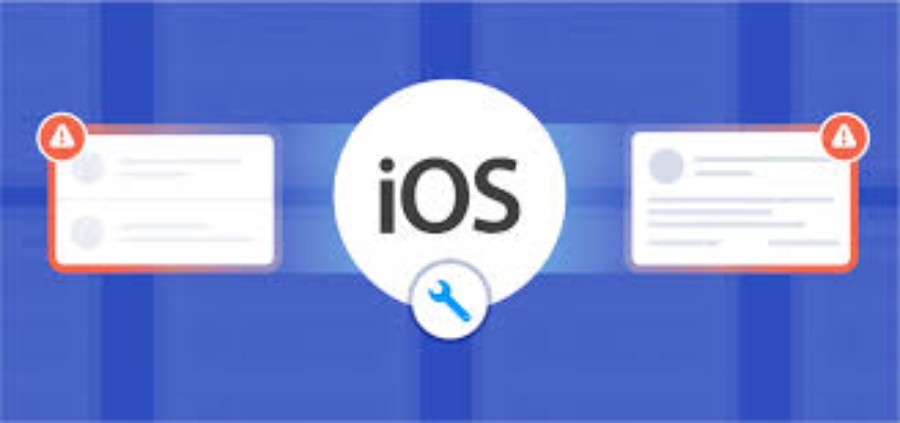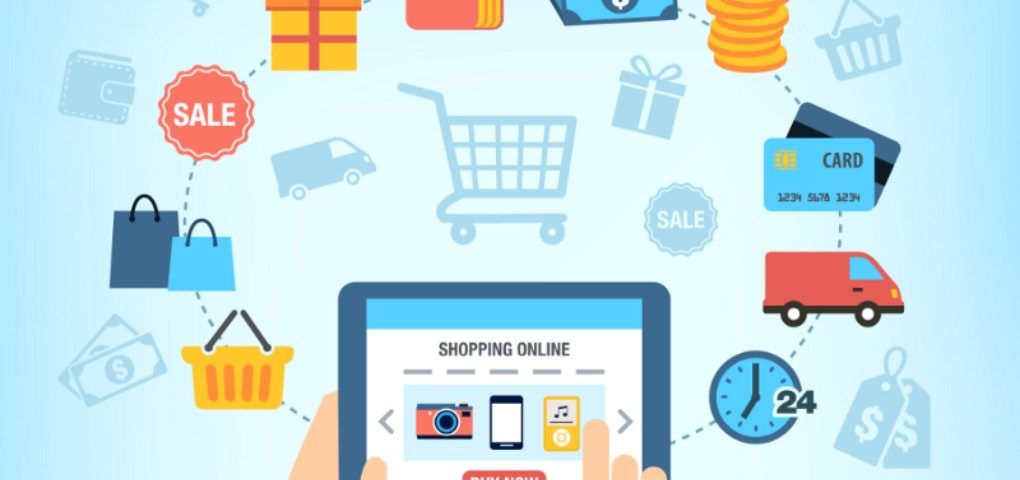
Top 5 iOS Crashes
6th May 2021
What is Web Scraping?
8th May 2021SIMPLE AND CLEAR DESIGN
User Interface (UI) is the first thing that users experience when they launch an ecommerce app – it allows users to enter the app, navigate and explore the categories and make searches.
Always keep in mind that the screen size of a mobile device is much smaller thus you’re limited with space – home screen should focus on having a clear layout with an easy navigation system and search features while each button, menu or content has to be well organized and neat.
Your design should be intuitive for users to easily navigate through the app – your UI shouldn’t make them think:
- Avoid complicated designs with lots of text or animation;
- Avoid UI junk as your users want to find the product they what as simple as possible;
- Use simple color schemes like monochromatic or analogous scheme;
- Pay attention to spacing – lines and dividers are great tools to emphasize different sections on a screen but you can also achieve the same effect by using shadows and colors.
- Use only a single typeface or you can play safely and use the platform’s default font like San Francisco for iOS or Roboto/Noto for Android. Sometimes it’s better to experiment with size, style or weight of the chosen typeface rather than using another font.
Just remember, get straight to the point – the fewer clicks, the better.
Also, consider that every mobile OS has its own style guidelines like Material Design for Android or Human Interface Guidelines for iOS.
The UI of a mobile app is a genuine attention grabber so make it the best possible.
QUICK LOGIN AND CHECKOUT
Nothing can irritate more than having to type in the same details over and over again like email address, name, surname, address, security questions and so on.
Don’t make users annoyed while logging or checking out – touch-screens are more distracting for writing as they lack a physical keyboard. If you make your login/checkout process long, you will definitely lose customers.
As said many times before, a good idea is to make social media login via Gmail, Facebook or any other favored social networks so that customers can easily login without bothersome numerous input.
Using social media has additional benefit if you create a ‘Share’ button – that way, your customers can share on social networks what they’ve bought and at the same time, advertise your business.
CONSISTENCY AND SIMPLE NAVIGATION
One of the key principles of design is keeping your mobile app consistent – it means having the similar elements behave and look the same way.
Consistency can be:
- Visual Consistency – buttons, fonts and color schemes should look identical
- Functional Consistency – interactive elements (e.g. navigation elements) should operate the same way on different screens
- External consistency – all your products (e.g. a website and both Android and iOS apps) should share similar design patterns.
Consistency brings infinite benefits like making your app more predictable so that users don’t have to learn new ways to navigate your app; it eliminates confusion, helps to prioritize content and evokes a positive emotional response with users.
You must ensure that your menu is positioned clearly throughout the app, listing only the most important sections and that each menu item is easily understood by using a single word.
The best is to use standard elements like the tab bar for iOS or navigation drawer for Android. Considering gesture-based navigation, think about well known patterns that all users intuitively understand like double tap for zooming in the photo or scrolling down if you wish to explore more products.
PROMINENT CART BUTTON
The cart should be always visible since it’s what every customer will use to buy products from you.
It should show clearly and be able to add a product without taking the users to the cart page, so that they can continue shopping.
Do whatever it takes to minimize the steps and deliver better shopping experience.
Product screens should always have a visible and a prominent button ‘Add to Cart’ or ‘Buy Now’ – it will help to make the buying experience simpler for the customer and to improve your sales.

ONE HAND INPUT
In the world of smartphones and touch screens, you must place the elements that will encourage users to take a specific action.
Thumb-friendly zone is a space on the screen which a user can easily reach with his thumb while holding a phone in the same hand.

Check if all your elements are in the thumb-friendly zone as people won’t take an effort if they cannot easily reach something.
Which buttons should be placed in the thumb-friendly zone?
- Add to cart
- Proceed button that leads from cart to checkout
- Pay button at the payment screen

Another way to keep it simple is ‘The Three-Tap Rule’ – it suggests that it shouldn’t take more than 3 taps for a user to get any of the products they want to buy.
Arranging and organizing your products in categories will meet this requirement. You can arrange your products as follows:
- Categories
- Sub-categories
- Products
You can also use tags to arrange products into specific campaigns like ‘Xmas Sale’ or ‘Valentine Gifts’ etc.
QUICK LOAD
Users don’t want delays anymore in loading or not loading in time. Loading circle for more than 4-5 seconds results in a user abandoning the app.
Just a single second delay in page loading can result in less views by 11% or customer satisfaction in 16% so make sure to speed it up.

If you want to stay ahead of the game in the e-commerce world, you need to make sure that your app loads as fast as possible. Each element, images or page should load under 4-5 seconds being the attention span time of online users.
You can use a progress bar to mitigate impatience - this way you let your customers know exactly how much time they need to wait until the process is finally complete.

FAVOURITE OR WISH LIST FEATURE
Customers like to browse or pick the best items before they actually make a purchase to a specific product.
The solution is a feature ‘add to favourite’ or ‘add to wish list’ as it lets users gather all their choices in one place before they decide which one they will buy – it’s pretty much similar to brick-and-mortar stores where customers firstly browse before eventually buying something.

Once they decide which item they will buy, customers can re visit their collected lists and decide which one will be the one as per their taste.
When you have an e-commerce app, you ask a lot of details from your customers like bank account details, credit card info, address and so on.
SECURITY FIRST
As usage of mobile phones becomes more and more popular, they are also becoming the target of hackers and attacks. A poorly secured app can easily be breached leaving personal information and financial data unprotected.
This is the reason why you should always provide the high level of security in an app as well as making each transaction encrypted with the best security features.
AUTO SUGGESTION
This feature is always handy for users – when they browse an app and go from one page to another, the activity can create data logs which can be used later to understand the behaviour of individual users.
That’s where apps use auto recommendation – to make it easier and faster for users to fill out forms. Auto suggestion predicts common search queries and helps customers to find products more easily.

Moreover, address lookup and validation makes the checkout process much faster – various APIs like Google Places enable easy implementation of this feature.
As e-commerce apps should earn your revenue, it’s highly important to deliver exceptional user experience. If you implement app analytics, it will provide you with insight for user-behaviour and similar patterns like session time, click-through rate, accessing custom fields and more.
The information collected will help you in understanding buying patterns of the users and allow you to provide better recommendations based on their interests all amounting to higher revenue streams.
PROMPT CUSTOMER SERVICE
Although you can make the app as simple as possible, customers frequently have some questions to which they’d like an answer. Facilitating the interaction between customers and representatives is a must-have for any ecommerce mobile app.

Providing live chat support to online customers or you can experiment with different options like messaging service, telephone or email support to see which ones your customers like the best.
This way, customers can easily get in touch with the store in case they have any questions about the products, shipping, payments and more.
Tell your developers to implement such feature in your ecommerce app as it will be more likeable by the customers and ensure more downloads, meaning more revenue.





